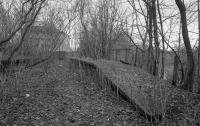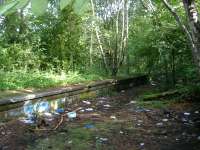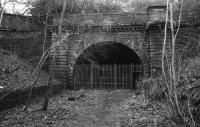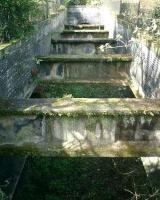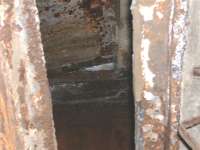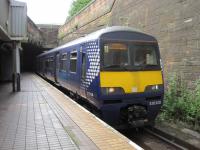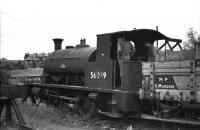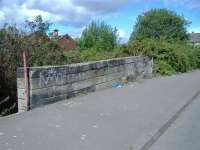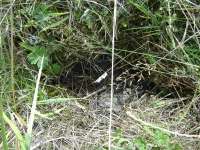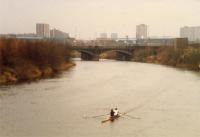Glasgow Central Railway
Introduction
This railway is open between Partick and Rutherglen. The system was entirely closed in the late 1960s but portions were re-opened as the Argyle Line in 1979.
Dates
| / /1888 | Glasgow Central Railway Act receives Royal assent. A connection to the existing Stobcross Goods Low Level sidings approved. |
| / /1888 | Glasgow Central Railway Caledonian Railway Glasgow Central Railway makes working agreement with the Caledonian Railway. |
| / /1889 | Glasgow Central Railway
Caledonian Railway Glasgow Central Railway absorbed by Caledonian Railway. Alternative date 31/5/1890 |
| / /1890 | Glasgow Central Railway Act authorises the extension of the Glasgow Central Railway from Bridgeton Cross [CR] to Carmyle and Newton for the Caledonian Railway. |
| / /1891 | Glasgow Central Railway Deviations at Stobcross and abandonment of original authorised alignment approved. |
| / /1891 | Lanarkshire and Dumbartonshire Railway Bellshaugh Junction (Glasgow Central Railway) to Maryhill Junction (Glasgow Central Railway) authorised, (which would complete a freight route in the north of Glasgow). |
| / /1893 | Dalmarnock Branch (Caledonian Railway)
Glasgow Central Railway Widening of Clyde Viaduct [Rutherglen] [1st] authorised for the opening of the new Glasgow Central Railway. This will be by opening Clyde Viaduct [Rutherglen] alongside. The new bridge is to the east of the older. The new line is carried by the old bridge and old line relocated to the new bridge. |
| / /1893 | Glasgow Central Railway Extension of time to build the Bridgeton Cross [CR] to Carmyle and Newton portion. |
| / /1894 | Glasgow Central Railway Authorisation to widen line under Glasgow Central - allowing the four platform Glasgow Central Low Level. |
| / /1894 | Glasgow Central Railway Glasgow Council requests a bridge be built over the River Kelvin to the east of Kirklee station, connecting Ford Road, the station (both on the west bank) and Kelvin Drive (east bank). |
| 26/11/1894 | Hamiltonhill Branch (Caledonian Railway)
Lanarkshire and Dumbartonshire Railway
Glasgow Central Railway Balornock Junction to Possil Junction, Maryhill [CR] and Stobcross (L&D railway no 4) opened to minerals and goods. This gave the Caledonian Railway an independent line to the Queens Dock lines. |
| /12/1894 | Glasgow Central Railway Kirklee and Kelvin Bridge opened to merchandise (light goods). |
| /12/1894 | Glasgow Central Railway Maryhill Central opened to goods. |
| 01/08/1895 | Glasgow Central Railway Opened to goods from Maryhill Junction to Bellshaugh Junction (using the Lanarkshire and Dumbartonshire Railway) and from Bellshaugh Junction to Kelvindale Paperworks. |
| 01/11/1895 | Dalmarnock Branch Extension (Caledonian Railway) London Road [Glasgow] and Bridgeton [1st] closed to passengers. (The Glasgow Central Railway opened.) |
| 01/11/1895 | Glasgow Central Railway Rutherglen to Glasgow Cross opened to passengers. Dalmarnock, Glasgow Green and Glasgow Cross stations opened. |
| 10/08/1896 | Glasgow Central Railway Maryhill Central to Glasgow Central Low Level to Glasgow Cross opened. Maryhill Central, Kirklee, Botanic Gardens, Kelvin Bridge, Stobcross, Anderston Cross and Glasgow Central Low Level stations opened. |
| 01/09/1896 | Glasgow Central Railway Line from Kelvindale Paperworks to Dawsholm Gas Works siding opened. |
| 01/10/1896 | Glasgow Central Railway Bellshaugh Junction to Dawsholm station opened to passengers. |
| 01/12/1896 | Glasgow Central Railway Carmyle to Newton opened to goods and minerals. |
| 29/01/1897 | Glasgow Central Railway Opened to goods between Bridgeton Cross [CR] and Carmyle. |
| 01/02/1897 | Glasgow Central Railway Bridgeton Cross [CR] to Carmyle to Newton section opened to passengers. Parkhead [CR] and Tollcross stations opened. Services can run through to Coatbridge Central or Airdrie [CR]. |
| 01/02/1897 | Airdrie Branch (Caledonian Railway) Airdrie [CR] trains begin to run from Glasgow Central Low Level on the Glasgow Central Railway (on opening of the line via Parkhead [CR]). |
| 02/08/1897 | Dalmarnock Branch (Caledonian Railway) New Clyde Viaduct [Rutherglen] bridge opened to carry the old line. This allows the Glasgow Central Railway to use the Clyde Viaduct [Rutherglen] [1st]. |
| 01/10/1897 | Glasgow Central Railway Bothwell [CR] trains run through to Glasgow Central Low Level. |
| / /1898 | Glasgow Central Railway Authorisation to electrify the lines. (Steam was used instead.) |
| / /1900 | Glasgow Central Railway (Date is a guess.) Branch from Dawsholm over the River Kelvin and through the cut-and-cover Dawsholm Tunnel to Temple Gas Works opened to minerals. |
| / /1904 | Glasgow Central Railway Diversion of Pointhouse Road authorised. |
| 01/05/1908 | Glasgow Central Railway Bellshaugh Junction to Dawsholm station closed to passengers. |
| 28/03/1909 | Glasgow Central Railway Botanic Gardens signal box closed. |
| 01/01/1917 | Glasgow Central Railway Glasgow Green closed |
| 01/06/1919 | Glasgow Central Railway Glasgow Green re-opened |
| / /1920 | Glasgow Central Railway Dawsholm (excluded) to Temple Gas Works closed. |
| 06/02/1939 | Glasgow Central Railway Botanic Gardens closed. |
| 01/05/1939 | Glasgow Central Railway Kirklee closed. |
| 31/01/1949 | Glasgow Central Railway Signal passed at danger (SPAD) at Glasgow Cross. |
| 03/03/1952 | Glasgow Central Railway Parkhead [CR] renamed Parkhead Stadium. |
| 04/08/1952 | Glasgow Central Railway Kelvin Bridge closed. |
| 02/11/1953 | Glasgow Central Railway Glasgow Green closed |
| / /1956 | Glasgow Central Railway Line re-signalled with power boxes at Bridgeton Cross [CR] and Stobcross. |
| 03/06/1956 | Glasgow Central Railway Stobcross East, Anderston, Glasgow Central Low Level, Glasgow Cross, Glasgow Green, Bridgeton Cross [CR] Junction signal boxes closed during conversion to colour light signalling. The boxes were replaced by new panels in the boxes at Stobcross and Bridgeton Cross [CR] Junction. |
| 03/08/1959 | Glasgow Central Railway Stobcross and Anderston Cross stations closed. |
| 02/11/1959 | Glasgow Central Railway Maryhill Central to Stobcross (via Kelvin Bridge) closed to passengers. (No stations remained to be closed.) |
| 16/05/1960 | Glasgow Central Railway Kirklee Junction (excluded) to Bellshaugh Junction (excluded) closed (the south to west curve at Kirklee/Maryhill). |
| 14/08/1960 | Glasgow Central Railway Kelvin Bridge (excluded) to Stobcross Junction (excluded) closed to freight. Kelvinbridge signal box closed. Maryhill Central Junction to Kelvin Bridge remains open as a branch. The portion line from Kirklee Junction to Kelvin Bridge is singled and worked by one-engine-in-steam. |
| 06/07/1964 | Glasgow Central Railway Maryhill Central Junction (excluded) to Kelvin Bridge closed to freight |
| 23/09/1964 | Glasgow Central Railway Kirklee Junction signal box closed on line closure from Kelvin Bridge to Maryhill Central Junction (excluded). |
| 03/10/1964 | Glasgow Central Railway Dawsholm Shed closed. |
| 05/10/1964 | Glasgow Central Railway Partick Central to Rutherglen closed to passengers. Partick West, Glasgow Central Low Level, Glasgow Cross, Bridgeton Cross [CR], Dalmarnock and Rutherglen closed. Bridgeton Cross [CR] to Carmyle to Newton closed to passengers. Bridgeton Cross [CR], Parkhead Stadium, Tollcross and Carmyle closed. Partick Central (excluded) to Strathclyde Junction (excluded) closed to all traffic. Bridgeton Cross [CR] to Tollcross (excluded) closed to all traffic. (The Lanarkshire and Dumbartonshire Railway also closed to passengers.) |
| 26/05/1965 | Glasgow Central Railway Stobcross East, Bridgeton Cross [CR] Junction signal box closed with line closure. |
| 04/04/1966 | Glasgow Central Railway Tollcross to Tollcross East closed to freight. |
| / /1968 | Glasgow Central Railway Kelvin Bridge station (closed) burns down. |
| / /1969 | Glasgow Central Railway Kelvin Bridge station demolished. |
| / /1970 | Glasgow Central Railway Botanic Gardens station building destroyed by fire. This also burned the below-ground buildings at platform level. |
| / /1970 | Glasgow Central Railway Kirklee station buildings demolished. |
| / /1977 | Glasgow Central Railway Glasgow Cross building demolished. |
| 05/11/1979 | Glasgow Central Railway The Argyle Line; Stobcross to Strathclyde Junction and Rutherglen Junction re-opened to passengers. Stations at; Finnieston [2nd], Anderston, Glasgow Central Low Level, Argyle Street, Dalmarnock and Rutherglen. |
| 30/05/1983 | Glasgow Central Railway Carmyle Junction (excluded) to Westburn Steel Works closed. |
| / /1986 | Stobcross Railway
Glasgow Central Railway Finnieston [2nd] renamed Exhibition Centre. |
| 11/12/1994 | Glasgow Central Railway The River Kelvin bursts its banks and floods the disused tunnels from Kelvin Bridge to Stobcross, where it floods the open Argyle Line railway. (Alternative date 9th.) The route through Glasgow Central Low Level is closed between Partick and Rutherglen and trains are diverted onto the Sunnyside Junction to Whifflet section of the Monkland and Kirkintilloch Railway for access to Motherwell. This remains in operation for around nine months. Units 314208 and 314212 are trapped in the floodwater at Glasgow Central where the water reached half way up the sides of the carriages. |
| 03/09/2007 | Glasgow Central Railway 318254, not in service, derails in tunnel at Exhibition Centre. |
| /06/2008 | Glasgow Central Railway Plan to convert Botanic Gardens into a nightclub for £7 abandoned. Council would not lease site to promoter. |
| /08/2011 | Glasgow Central Railway Beginning of renovation of Dalmarnock as the main station for the 2014 Commonwealth Games. |
Portions of line and locations
This line is divided into a number of portions.
Maryhill to Rutherglen
This was a four platform station. There were two through platforms and, on either side, two bay platforms for terminating services via Glasgow Central. These bays had carriage sidings alongside. Platforms were canopied. The majority of passenger trains terminated here, however the through lines were for passenger trains to Possil and goods and mineral trains running from [[Balornock ...
More detailsSee also
Lanarkshire and Dumbartonshire Railway
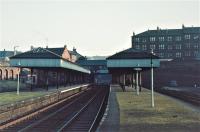
Brian Haslehust 03/10/1964
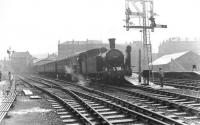
G H Robin collection by courtesy of the Mitchell Library, Glasgow 06/05/1961
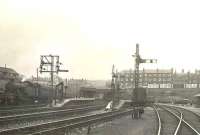
G H Robin collection by courtesy of the Mitchell Library, Glasgow 25/07/1951
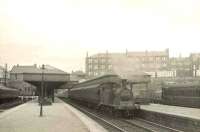
G H Robin collection by courtesy of the Mitchell Library, Glasgow 25/07/1951
This junction was west of Maryhill Central station. The station was on the east side of Garrioch Road and junction on the west side.
...
See also
Lanarkshire and Dumbartonshire Railway

Veronica Clibbery 07/05/2011
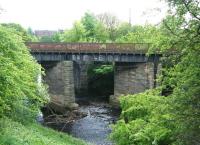
Veronica Clibbery 07/05/2011
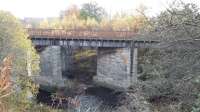
Rod Crawford 01/11/2015
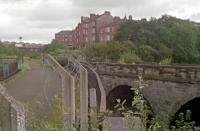
Ewan Crawford //1988
This was a two platform station with buildings by John James Burnet. The main building was on the northbound platform alongside Kirklee Place.
...
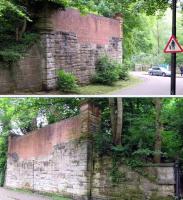
Colin Miller 30/06/2013
This is a disused double tunnel between Kirklee station to the west and Botanic Gardens station to the east. The tunnel has a fine west portal. This portal entry is gated to prevent access to Botanic Gardens station. The tunnel is a conventional brick lined elliptical one, not cut and cover unlike Great Western Road tunnel which is to the east of Botanic Gardens. ...
More details
Alistair MacKenzie 24/04/2008
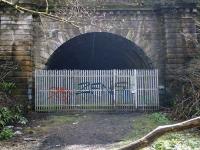
Alistair MacKenzie 24/04/2008
This was a two platform station in the west end of Glasgow. The station was below ground level with a fine surface building.
...

Iain Teaz 18/12/2021
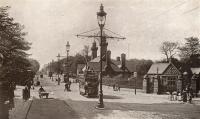
Ewan Crawford Collection //
This is a disused double track cut and cover tunnel under Great Western Road between Botanic Gardens station (west) and Kelvin Bridge station (east). The tunnel is not only below the roadway but also below the pipes of Glasgow Corporation's Loch Katrine Aqueduct.
...

Alistair MacKenzie 01/12/1979
This was a two platform station. The north end of the station platforms were on a bridge over the River Kelvin. On the east side of the station was a goods yard, approached from the south.
...

Bill Roberton //1988
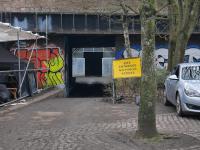
Bill Roberton 18/01/2022
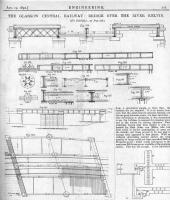
Alistair MacKenzie 10/01/2011

Bill Roberton //1993
This signal box was located between Stobcross, to the south, and Kelvinbridge stations. It was on concrete overline bracing in the very short section of open line between Stobcross Depot Tunnel, to the south, and St Vincent Crescent Tunnel to the north. To its immediate south, and in the open air, the line was crossed above by the Glasgow City and District Railway, both lines ...
More detailsThis was a double track tunnel between St Vincent Crescent Signal Box to the north and Stobcross station to the south east where it met Kelvinhaugh Tunnel.
...
This station is at the east end of a flying junction from Partick, leading to an unusual V shape.
...
See also
Lanarkshire and Dumbartonshire Railway
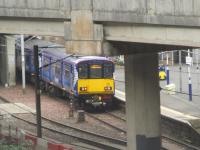
David Bosher 06/09/2022
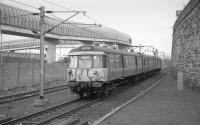
...
Bill Roberton /02/1988
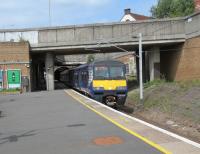
David Panton 07/07/2018
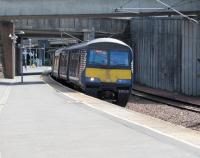
David Panton 13/07/2019
This goods depot was located next to the Queens Dock on the north side of Pointhouse Road. By reversal a set of holding sidings could be reached to the west. Sidings serving the quaysides were south of the road.
...
See also
Stobcross Railway

Ewan Crawford //1988

G H Robin collection by courtesy of the Mitchell Library, Glasgow 09/09/1958
This is a double track tunnel between Exhibition Centre and Anderston stations. The tunnel is 500 yds long.
...
This is an island platform station. There is a ticket office at street level, below the Kingston Bridge, a motorway bridge carrying the M8 over the River Clyde just to the west of the Glasgow city centre.
...
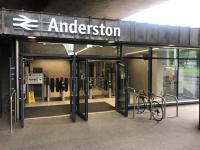
...
Network Rail /06/2023

Roger Geach Collection //1979
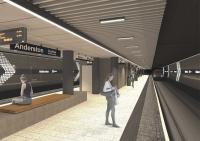
Network Rail 22/03/2022
This is an underground island platform station with two faces.
...

David Panton 11/12/2019
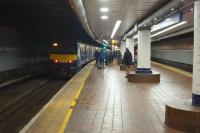
John McIntyre 10/01/2019

Network Rail /02/2022
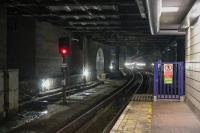
Network Rail /02/2022
This is an underground island platform station principally accessed from Argyle Street, a busy shopping street in Glasgow. The ticket office is at street level.
...
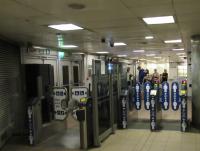
David Panton 19/09/2020
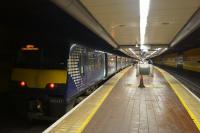
John McIntyre 10/01/2019
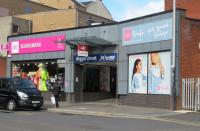
David Panton 07/10/2020

David Panton 05/01/2019
This was an underground station with an island platform of two faces. There was a surface level building by John James Burnet on a road traffic island in the Trongate.
...

Colin McDonald 31/01/2015

Colin McDonald 21/01/2015

Colin McDonald 31/01/2015
This was a two platform station located in a dressed stone lined cutting. There was a surface level building at the west end, above the line, on Binnie Place. Lettering above the double doors of the entrance read 'Glasgow Green Station'. The station had no goods sidings.
...

Ewan Crawford //1998
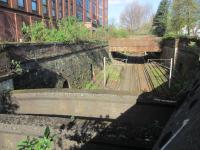
Gordon Steel 24/04/2023
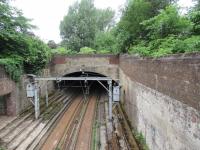
David Panton 23/06/2021

G H Robin collection by courtesy of the Mitchell Library, Glasgow 06/05/1961
This is a two platform station. The original configuration of this station was somewhat unusual - two platforms on either side of the line to Rutherglen and an island platform on the line to Carmyle. Platforms were heavily canopied.
...

Gordon Steel 24/04/2023

...
David Panton 02/09/2017

David Panton 11/12/2019
This is a partly underground two platform station. It is a re-opened station which opened with the Argyle Line. The south east end of the station is exposed but in a deep stone lined cutting and the north west end is in the Dalmarnock Road Tunnel. There are heavy concrete cross-braces over the line to support the cutting walls.
...

David Panton 25/08/2018

John McIntyre 10/01/2019
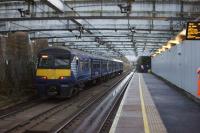
John McIntyre 10/01/2019
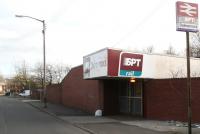
John Furnevel 01/04/2007
This seemingly grandiosely named junction was named for the Strathclyde Print Works which was on the north bank of the River Clyde by Dalmarnock House. In 1866 the Dalmarnock Branch (Caledonian Railway) opened from Dalmarnock Junction, Rutherglen, north to Bridgeton Goods, the line passing along the western boundary of the works. The junction was formed in 1877 when the ...
More detailsSee also
Dalmarnock Branch (Caledonian Railway)
Dalmarnock Branch Extension (Caledonian Railway)

John Furnevel 01/04/2007
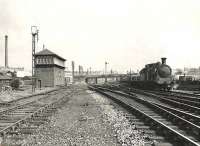
G H Robin collection by courtesy of the Mitchell Library, Glasgow 17/05/1957

Ewan Crawford //1988
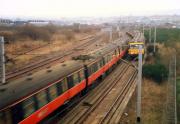
Ewan Crawford //1988
This foundry was on the west side of the Dalmarnock Branch (Caledonian Railway) and Strathclyde Junction. The works was on the south side of Arthur Street.
...
See also
Dalmarnock Branch (Caledonian Railway)
Dawsholm to Kirklee
This exchange yard was to the south of the Temple Gas Works. It was served by a branch of the Glasgow Central Railway approached from Dawsholm through Dawsholm Tunnel and lined cutting from the east.
...
This gas works was enclosed between the Forth and Clyde Canal, to the south, Stobcross Railway, to the west, and the River Kelvin, to the east. Also known as Gas Works No 2, Glasgow Corporation.
...
This was the terminus of the Glasgow Central Railway branch from Bellshaugh Junction. The station had an island platform with a building at the north end and a glazed canopy running down the platform. It was immediately south of the Kelvin Aqueduct of the Forth and Clyde Canal.
...
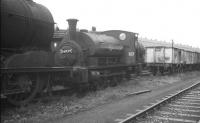
K A Gray 23/05/1959
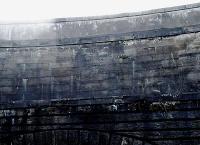
Ewan Crawford 12/02/2005
This shed was developed on the east side of the Dawsholm to Bellshaugh Junction line of the Glasgow Central Railway. The shed was single ended and approached from the north.
...
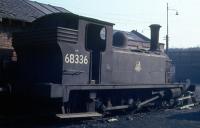
Colin Kirkwood 02/03/1963
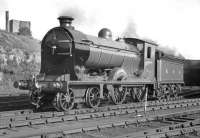
K A Gray 18/09/1959
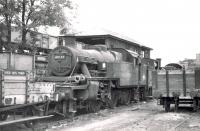
Bill Hamilton //1961
This was a double track viaduct crossing the River Kelvin and Kelvindale Road. A girder section crossed the road at north end, then a short masonry arch section and a steel truss section over the river. Also known as Kelvindale Viaduct.
...
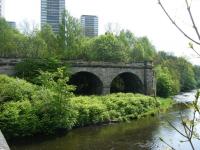
Veronica Clibbery 07/05/2011
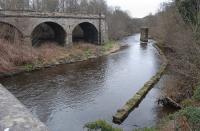
Bill Roberton 21/03/2011
This was a four way junction. To the west were the lines to Dawsholm (north west, 1895) and Dumbarton Central (west, 1896). To the east were the lines to Maryhill Central and Balornock Junction (east, 1895) and Glasgow Central (south, 1896). The junction was on a cramped site on the south bank of the River Kelvin, the Dawsholm fork crossing the river immediately north west ...
More detailsSee also
Lanarkshire and Dumbartonshire Railway
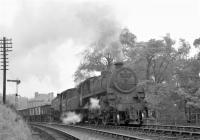
Robin McGregor 24/09/1964
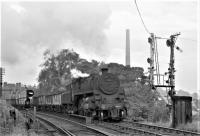
Robin McGregor 24/09/1964
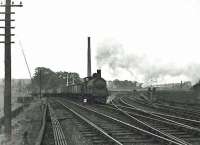
G H Robin collection by courtesy of the Mitchell Library, Glasgow 22/09/1959
Tollcross New Line
Bridgeton to Carmyle
This is a two platform station. The original configuration of this station was somewhat unusual - two platforms on either side of the line to Rutherglen and an island platform on the line to Carmyle. Platforms were heavily canopied.
...

Gordon Steel 24/04/2023

...
David Panton 02/09/2017

David Panton 11/12/2019
This was a two platform station. Station buildings were at platform level with glazed canopies. There was a signal box (Parkhead Station box 1897-1963) at the east end, north side of the line, and no goods yard. The station was located in a shallow cutting.
...
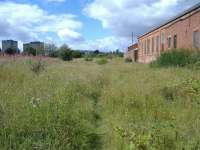
Colin Harkins 29/08/2006
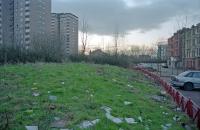
Ewan Crawford //1998
This signal box was east of Maukinfauld Road and on the north side of the line. It controlled access to various works east of Parkhead Stadium station.
...
This was an island platform station on a raised embankment. The station building was canopied all around. The signal box was across the westbound line from the station building. There was a goods yard on the north side, approached from the east.
...
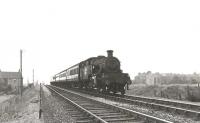
G H Robin collection by courtesy of the Mitchell Library, Glasgow 27/07/1961

G H Robin collection by courtesy of the Mitchell Library, Glasgow 22/07/1961
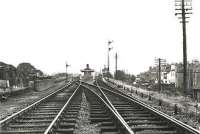
G H Robin collection by courtesy of the Mitchell Library, Glasgow 01/08/1961

G H Robin collection by courtesy of the Mitchell Library, Glasgow 29/07/1949
This signal box opened in 1913, some years after the line opened in 1896. It was opened to serve the branch to Stewart and Lloyds' Tollcross Tube Works. The box was located on the north side of the London Road overbridge and was on the west side of the line.
...
This is a two platform station which was opened in 1993 on the site of a former station.
...
See also
Rutherglen and Coatbridge Branch (Caledonian Railway)

David Panton 25/08/2018
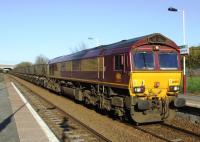
Colin Harkins 15/04/2008
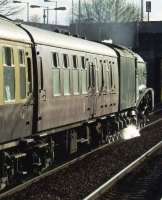
Colin Harkins 15/04/2008
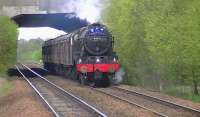
Ken Browne 24/04/2012
This was a double junction. The existing 1865 Rutherglen and Coatbridge Branch (Caledonian Railway) was met by the 1896/7 Glasgow Central Railway which used the original line for a very short distance between its two portions. The Carmyle goods yard was modified to lead off the Glasgow Central Low Level route. The signal box (which replaced the old Carmyle box) was on the south ...
More detailsSee also
Rutherglen and Coatbridge Branch (Caledonian Railway)

G H Robin collection by courtesy of the Mitchell Library, Glasgow 19/09/1959
Carmyle to Newton
This was a double junction. The existing 1865 Rutherglen and Coatbridge Branch (Caledonian Railway) was met by the 1896/7 Glasgow Central Railway which used the original line for a very short distance between its two portions. The Carmyle goods yard was modified to lead off the Glasgow Central Low Level route. The signal box (which replaced the old Carmyle box) was on the south ...
More detailsSee also
Rutherglen and Coatbridge Branch (Caledonian Railway)

G H Robin collection by courtesy of the Mitchell Library, Glasgow 19/09/1959

Alistair MacKenzie 06/12/1979
This signal box was north of Westburn Viaduct and south of Carmyle Junction (and Carmyle Goods Yard). It was on the east side of the line.
...
This double track viaduct with three lattice girders on stone piers crosses the River Clyde between Carmyle Junction (to the north west) and Westburn Junction, to its immediate south. The line closed in 1983. In 2022 the viaduct did not carry a footpath and was blocked off at either end, there is a proposal to put a foot/cyclepath over the viaduct.
...

John Furnevel 08/04/2007
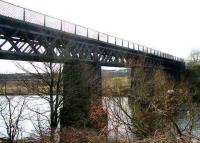
John Furnevel 08/04/2007
This junction was to the south of the Westburn Viaduct. Here the Glasgow Central Railway of 1896 (the portion between Carmyle Junction and Steel Company of Scotland Works Junction, now Newton West Junction) was met by the 1904 Lanarkshire and Ayrshire Railway branch from Kirkhill Junction.
...
See also
Lanarkshire and Ayrshire Railway
This steel works was opened by Redpath, Brown & Co Ltd in 1920/1, manufacturing structural steel for a variety of purposes including buildings, shipbuilders, collieries and bridges,
...
This is a two platform station. The location was formerly a four platform station, the two northern tracks no longer have platforms and allow non-stop trains to bypass the station.
...
See also
Clydesdale Junction Railway
Hamilton Branch (Caledonian Railway)
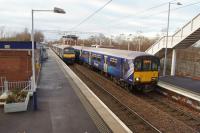
John McIntyre 10/01/2019
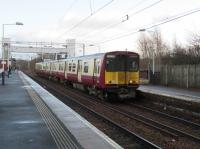
David Panton 11/12/2019
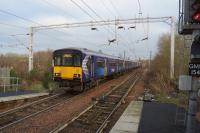
John McIntyre 10/01/2019
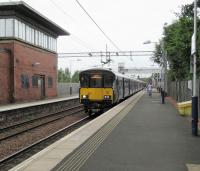
David Panton 08/09/2018
Westburn to Kirkhill
This junction was to the south of the Westburn Viaduct. Here the Glasgow Central Railway of 1896 (the portion between Carmyle Junction and Steel Company of Scotland Works Junction, now Newton West Junction) was met by the 1904 Lanarkshire and Ayrshire Railway branch from Kirkhill Junction.
...
See also
Lanarkshire and Ayrshire Railway
This junction was east of Kirkhill station and Kirkhill Tunnel. Here the line from Ardrossan North (and today from Neilston) divided into routes to Newton and Carmyle. The junction was in a cutting directly east of the tunnel.
...
See also
Lanarkshire and Ayrshire Railway
Second Clyde Viaduct
This viaduct was added to the east of the existing Dalmarnock Branch (Caledonian Railway). With the addition of a new approach at either end this was brought into use for the older line. The original bridge was now used for the Glasgow Central Railway. When the Argyle Line re-opened the newer bridge was used, the older bridge has been dismantled.
This viaduct was opened in 1895 to the immediate east of Clyde Viaduct [Rutherglen] [1st]. It was built by the Glasgow Central Railway to take the lines of the older Dalmarnock Branch (Caledonian Railway) which had opened in 1861.
...
This junction was replaced by the present Rutherglen North Junction, the present junction being south of the former Clydebridge Junction (the original Rutherglen North Junction [1st] was further south).
...
See also
Dalmarnock Branch (Caledonian Railway)
The Switchback (Caledonian Railway)
Lanarkshire and Dumbartonshire Railway
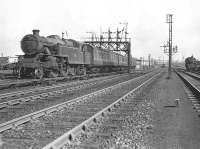
G H Robin collection by courtesy of the Mitchell Library, Glasgow 17/05/1957










